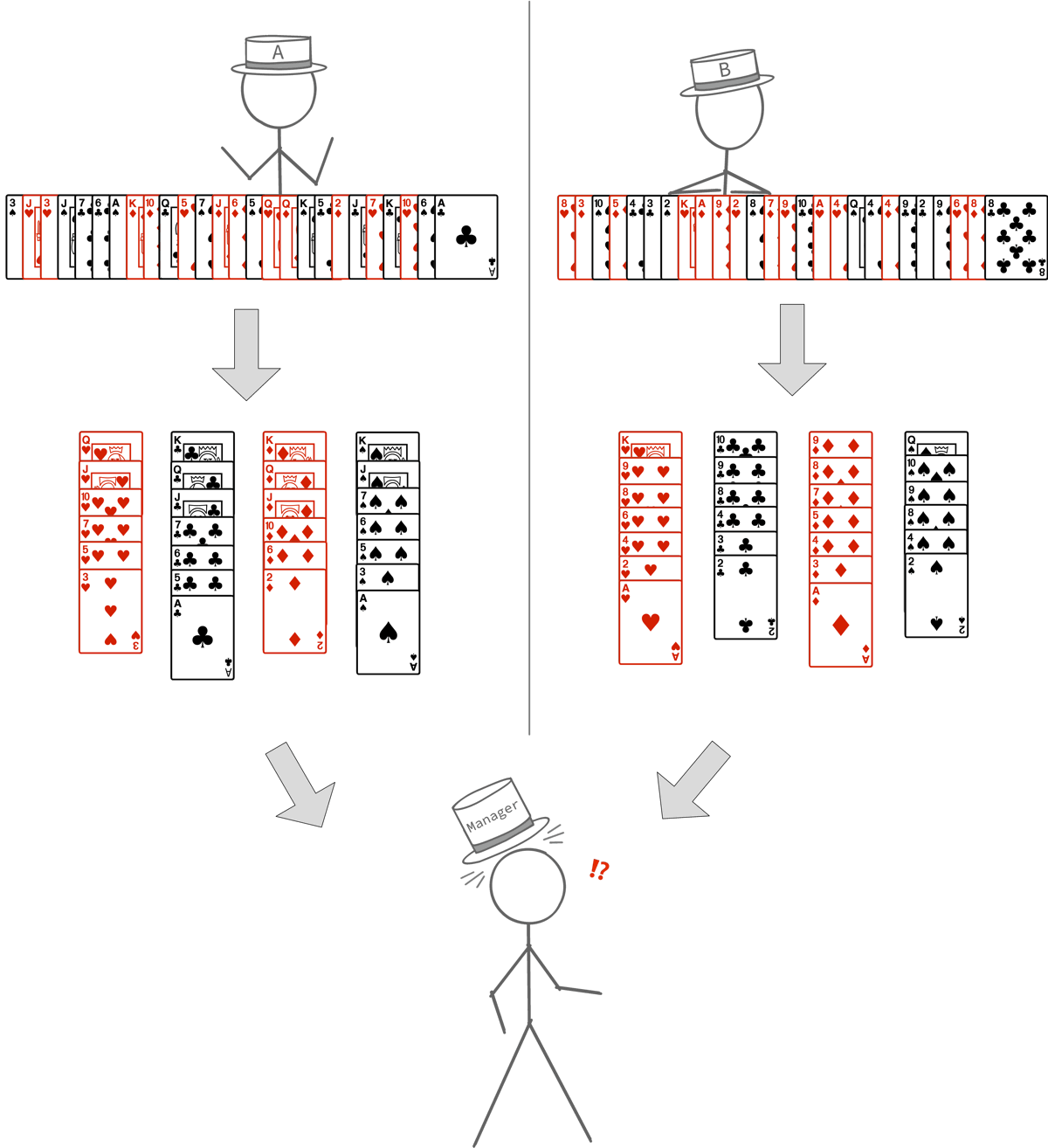Working Independently
When you have a group of people working together, it is often more efficient to use a different process than you would for a single person. If you gave each worker their own workspace and half the card deck, they could work at full speed with no resource contention. A workflow design where parallel workers have independent workspaces is called distributed memory parallelism in parallel computing.
Multiple independent workers
While the individual sorting strategy is the same for all workers, giving workers independent workspaces changes the workflow. In contrast with the previous workflows, each worker:
- has independent inputs
- works in their own workspace
- produces independent output
This design solves the resource contention, but it also creates a new kind of work! You want one final result, but you have one output per worker. As the deck owner (manager), you are responsible for combining these outputs into a coherent final result. The amount of work required to coordinate multiple workers can increase rapidly with the number of workers.


CVW material development is supported by NSF OAC awards 1854828, 2321040, 2323116 (UT Austin) and 2005506 (Indiana University)